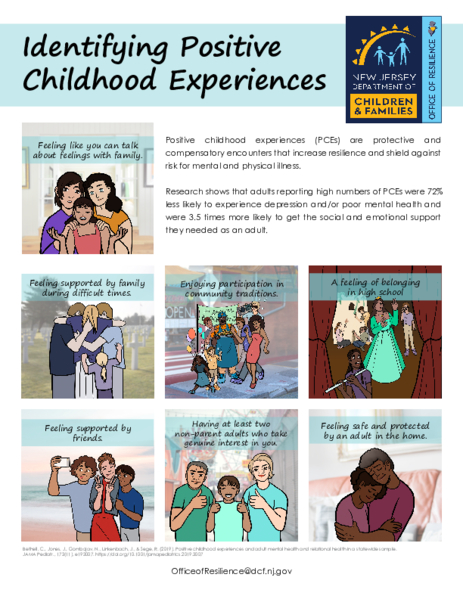ACEs = Adverse Childhood Experiences
PCEs = Positive Childhood Experiences
PACEs = Positive and Adverse Childhood Experiences
Raise your hand if you’ve given a talk – or been part of a talk - on ACEs and someone has started crying. Or looks numb. Or won’t make eye contact after the session. Anyone? All of these have happened to me at one time or another, despite my practices of not sharing heartbreaking stories, providing trigger warnings, and emphasizing the human ability to heal. Learning about ACEs is emotionally demanding, particularly when it’s the first-time hearing about them.
For anyone who isn’t familiar, PCEs research started showing up in literature in 2019, showing they have a protective and mitigating effect on ACEs. Defined as, “…protective and compensatory encounters that increase resilience and shield against risk for mental and physical illness,” they capture the other side of the coin of childhood – the good things that happen, often right alongside adversity. One of my favorite sayings is that our lived experience becomes our biology. Only now I make sure to say, our lived experience – good and bad – become our biology.
ACEs research tells us that if an adult has a score of 4 or more, they are at increased risk for depression, poor mental health, and insufficient social and emotional support as well as poorer physical health. Research shows that positive childhood experiences offer protection from adverse ones. For example, if you have a high (6-7) PCEs score you are less likely to experience depression and more likely to get the social and emotional support you need, regardless of your ACEs score. In a similar study, PCEs were shown to compensate for ACEs’ negative impact on physical and mental health, so that health risks were neutralized for ACEs scores of 4 or less, and risks decreased for higher ACEs scores. (Want to know your ACEs and PCEs scores? Click here.)
Positive childhood experiences are embodied. What do I mean by that? Look at the infographic language – it’s up to the individual to tell us whether they feel these things, not up to us as outside observers. This is the distinction between protective factors, like nurturing, knowledge of parenting and developmental behaviors, parental resilience, and social connection, plus adequate social determinants of health. The presence of protective factors may well increase the likelihood of a child having PCEs, but it is not a given. I think, for instance, of a child of conservative parents that is exploring their gender identity: the parents may deeply love their child, and yet that child may not “feel like they can talk about their feelings” with their family.
One of the reasons I love to talk about PCEs is that I believe they can guide initiatives for organizations serving children and families. Do our youth feel like they belong? Do they enjoy community traditions? Do they have at least two non-parent adults taking a genuine interest in them? Creating spaces that allow for youth to have these feelings aligns with the foundation of being trauma-informed – they are safe, physically and psychologically/emotionally.
For all these reasons, the NJ Office of Resilience is shifting our community conversations from ACEs to PACEs. When we provide training, both will always be taught. When we advocate for community-driven policy and funding opportunities, we promote PCEs for guidance. It felt like an affirmation of this decision, recently, when the Centers for Disease Control and Prevention (CDC) incorporated PCEs into a grant call. How are you incorporating them in your work and world? We’d love to hear about it! Email us at DCF.OfficeofResilience@dcf.nj.gov.

References
Bethell, C. et al. (2019). Positive childhood experiences and adult mental and relational health in a statewide sample: Associations across adverse childhood experiences levels. JAMA Pediatrics. https://doi.org/10.1001/jamapediatrics.2019.3007
Crandall, A. et al. (2019). ACEs and counter-ACEs: How positive and negative childhood experiences influence adult health. Childhood Abuse & Neglect. https://doi.org/10.1016.j.chiabu.2019.104089


Comments (2)